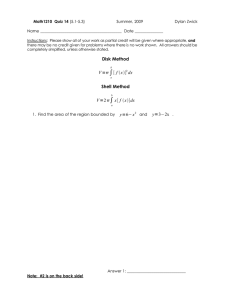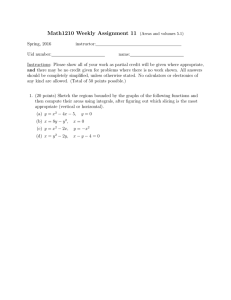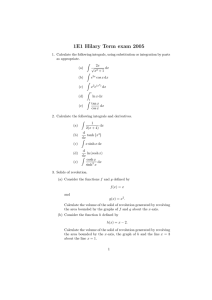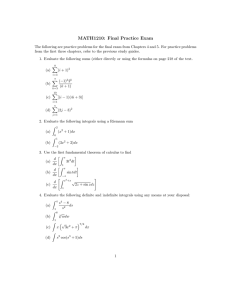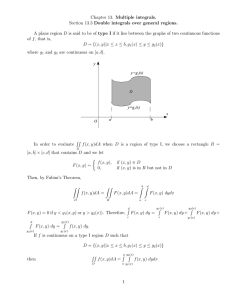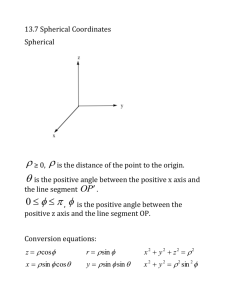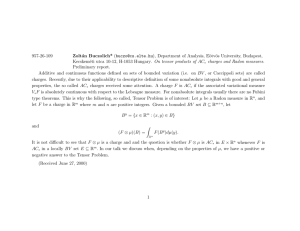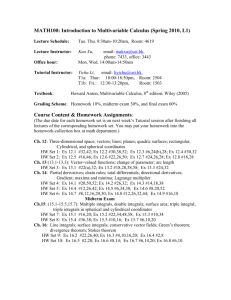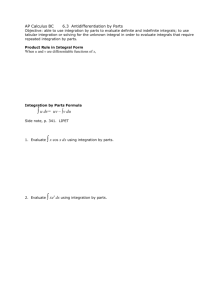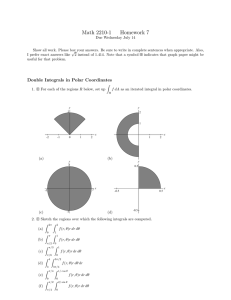MATH 1352-071 Exam II March 24, 1999
advertisement
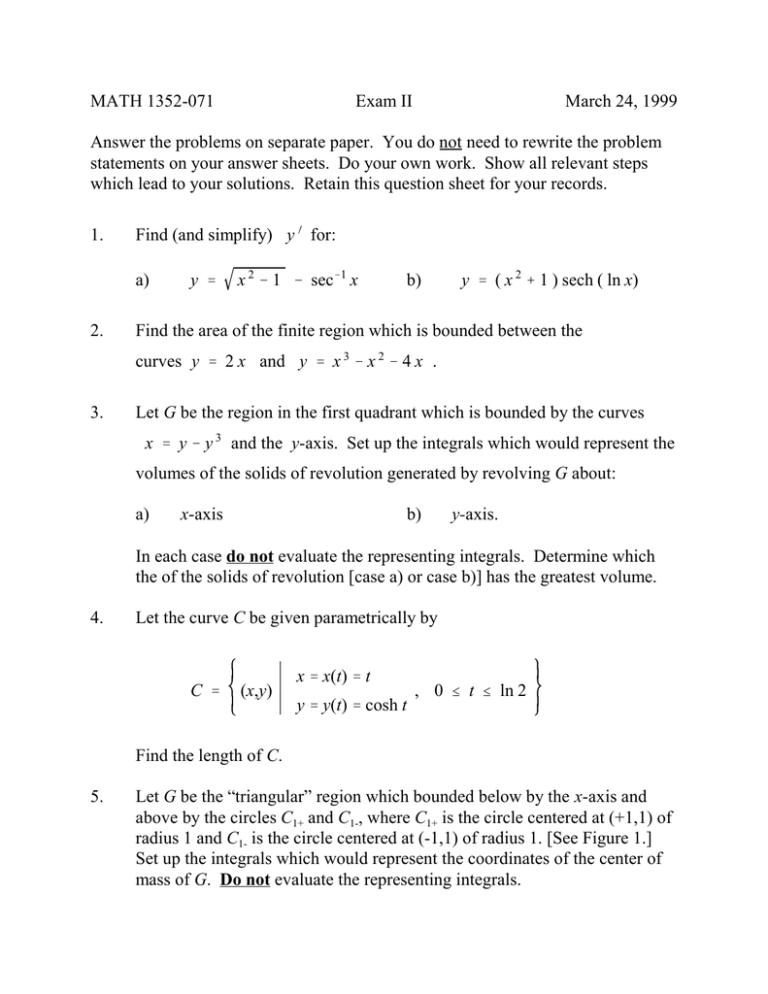
MATH 1352-071 Exam II March 24, 1999 Answer the problems on separate paper. You do not need to rewrite the problem statements on your answer sheets. Do your own work. Show all relevant steps which lead to your solutions. Retain this question sheet for your records. 1. Find (and simplify) y ) for: a) 2. y ' x 2 & 1 & sec&1 x b) y ' ( x 2 % 1 ) sech ( ln x) Find the area of the finite region which is bounded between the curves y ' 2 x and y ' x 3 & x 2 & 4 x . 3. Let G be the region in the first quadrant which is bounded by the curves x ' y & y 3 and the y-axis. Set up the integrals which would represent the volumes of the solids of revolution generated by revolving G about: a) x-axis b) y-axis. In each case do not evaluate the representing integrals. Determine which the of the solids of revolution [case a) or case b)] has the greatest volume. 4. Let the curve C be given parametrically by C ' x ' x(t) ' t , 0 # t # ln 2 (x,y) /0 00 y ' y(t) ' cosh t Find the length of C. 5. Let G be the “triangular” region which bounded below by the x-axis and above by the circles C1+ and C1-, where C1+ is the circle centered at (+1,1) of radius 1 and C1- is the circle centered at (-1,1) of radius 1. [See Figure 1.] Set up the integrals which would represent the coordinates of the center of mass of G. Do not evaluate the representing integrals. Bonus Problem (Take Home): Consider the inverted conical tank T (see Figure 2) with upper radius 2´ and depth 8´, which is filled with water. Suppose Firm A contracts to pump out the “top half” of T, i.e., the water from the top down to a depth of 4´. Also, suppose that Firm B contracts to pump out the “bottom half” of T, i.e., (after Firm A finishes) the water from the depth of 4´ to the bottom. Which firm will have to do more work? The dividing line (where Firm A’s work stops and Firm B’s work starts) is 4´ down from the top. Where should the dividing line be set so that the division of work between the two firms is equitable? i.e., the amount of work that each firm contracts to perform is the same?
